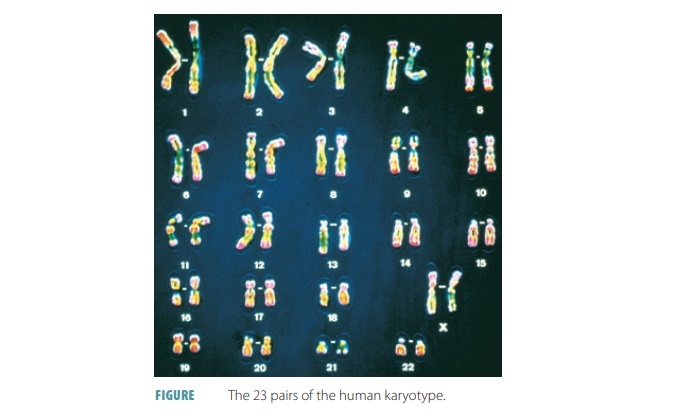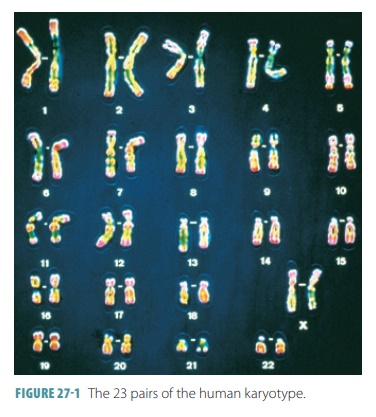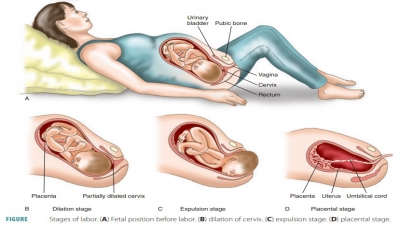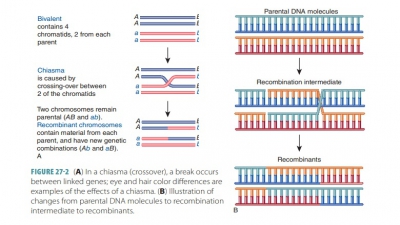Genes
| Home | | Anatomy and Physiology | | Anatomy and Physiology Health Education (APHE) |Chapter: Anatomy and Physiology for Health Professionals: Heredity
1. Explain the modes of inheritance. 2. How do the sex chromosomes differ between males and females? 3. Explain dominant and recessive alleles. 4. How does X-linked recessive inheritance affect males and females? 5. What are the differences between a genotype and a phenotype?

Genes
Children inherit traits from their parents and rel-atives as
determined by DNA. Individual segments of DNA are known as genes. When a gene’s DNA sequence changes or mutates, an illness or other condition may result. Spontaneous mutations occur because of
random DNA replication errors. The field of genetics investigates how genes result in certain characteristics
affecting health or contributing to natural variation. It also focuses on how
genes are passed from generation to generation. Today, fetal chromosome checks provide clues to
a child’s future
health.
All human cells, except gametes, have a diploid
number of chromosomes (46). This number consists of 23 pairs of homologous
chromosomes. One pair is from the father (via the sperm) and the other
pair is from the mother (via the egg). Homologous chro-mosomes appear similar,
carrying genes for the same traits. However, they do not always bring about the
same expressions of the traits.
Autosomes
are pairs 1 through 22 and do not carry genes that determine sex, but function to
guide the expression of most other traits. Only pair 23, the X and Y
chromosomes, is sex
chromosomes. Females have two X chromosomes and males have
one X and one Y chromosome. A sex chromo-some pair may be very different in
size. Karyotypes
are charts that display the 23 chromosome pairs of human somatic cells (FIGURE 27 -1). The diploid genome is actually an
individual’s genetic (DNA) makeup.
It represents the two sets of genetic instruc-tions, from the egg and from the
sperm.

Alleles
Somatic cells have two copies of each autosome, and
therefore two copies of each gene. Gene copies can be identical or slightly
different in a DNA sequence. Such varying forms of a gene are called alleles. A gene’s position on a chromosome
is called a locus. An
allele may code for identical or different forms of a given trait. An
individual with two identical alleles of a gene is homozygous for that gene. A person with two different alleles is heterozygous for that gene. A heterozygote is
also called a carrier. A person with
only one copy (allele) of a gene is referred to as hemizygous.
Patterns of inheritance through families are known as modes of inheritance. A dominant allele masks expression of a recessive allele. Genes cannot be expressed
unless they are present in a homozy-gous condition. Capital letters are used to
designate dominant alleles. The extent to which a certain allele is expressed
when it is present is called its expressiv-ity.
The following generalizations describe modes of inheritance:
■■ Autosomal
conditions that affect both sexes: X-linked
characteristics affect males much more often than females. Y-linked
characteristics are only passed from father to son.
■■ Autosomal
recessive conditions from two healthy carrier parents: Recessive conditions
can “skip” generations.
■■ Dominant
condition with at least one affected par-ent: Generations are not skipped
in these cases.
Genotype and Phenotype
The alleles situated at one or more sites on homologous
chromosomes make up an individual’s genotype (actual genetic makeup). A pair of alleles is usually
designated by letters or symbols, such as “AA” when the alleles are identical
and “Aa” when they are differ-ent. Penetrance
is the regularity with which an allele is expressed in an individual who carries
it. If the allele always produces its effect on the phenotype, it is called fully penetrant. The condition called achondroplasia is caused by a fully penetrant allele. When the allele is present,
achondroplasia results.
A phenotype consists
of the complete observable characteristics of an organism or group. It includes
anatomic, physiologic, biochemical, and behavior traits that are determined by
the interaction of genetic makeup and environmental factors. A certain
inher-ited trait may be anticipated to occur in the offspring of two
individuals when their genes and chromosomes are considered.
1. Explain the modes of inheritance.
2. How do the sex chromosomes differ between males and
females?
3. Explain dominant and recessive alleles.
4. How does X-linked recessive inheritance affect males and
females?
5. What are the differences between a genotype and a
phenotype?



